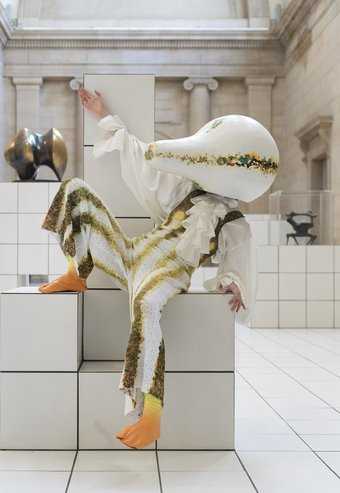What is the role of a curator? What are the decisions, strategies and approaches that inform and shape the work of curators today? How do they negotiate the wide range of social, political and economic factors in which they operate?
Across eleven weeks, learn about the ways in which curators at Tate develop, manage and engage with art and a collection, exhibitions and events programmes. Led by independent curator Lynton Talbot, this course also considers how a curator’s work responds to diverse institutional and non-institutional influences, as well as current global social and economic contexts.
Sessions focus on current exhibitions including Dorothea Tanning, working with a museum collection, planning for the future and expanding audiences. We also explore the relationships developed and negotiated between curators, artists and other partners.
Throughout the course Tate staff present on their current work in Q&A sessions with participants, while readings and visits to galleries will highlight key issues and themes of contemporary curating practices.
No prior knowledge of art history or museum studies is necessary.
Biography
Lynton Talbot is an independent curator and writer based in London, working collaboratively with artists to produce text, exhibitions and platforms for performance.Together with Hana Noorali, he has started project spaces in both London and Berlin and has independently curated exhibitions in commercial galleries, public institutions and project spaces across London and internationally. Currently, Talbot is a collaborative participant in an itinerant project with artist, Cally Spooner called Offshore. Situated somewhere between a rehearsal, an occupation, a programmation and a book synopsis, Offshore aims to collectively rethink the possibilities for working, via an understanding of attention economics. This has so far been staged in Belugoa, Bilbao, The M Museum, Leuven and at The Stanley Picker Gallery, London. Talbot has taught at Goldsmiths University, The School of the Damned, The Architectural Association and across University of the Arts London. He is currently Senior Lecturer for Chelsea College of Art's Curating and Collections MA and a member of UAL's Collections Committee.
Past participant comments
It was great to learn about theories behind curating, as a lot of it is very practical – great to hear from curators but also from peers.
By looking at each of the departments we were able to see how they work together to make museums run smoothly. Curating is involved with all these aspects.
I have learnt so much in such an animated and engaging environment that I can now excitedly say that I would like to pursue curation further as a career!
Organised in collaboration with the Department of Culture, Media and Creative Industries, King’s College London

